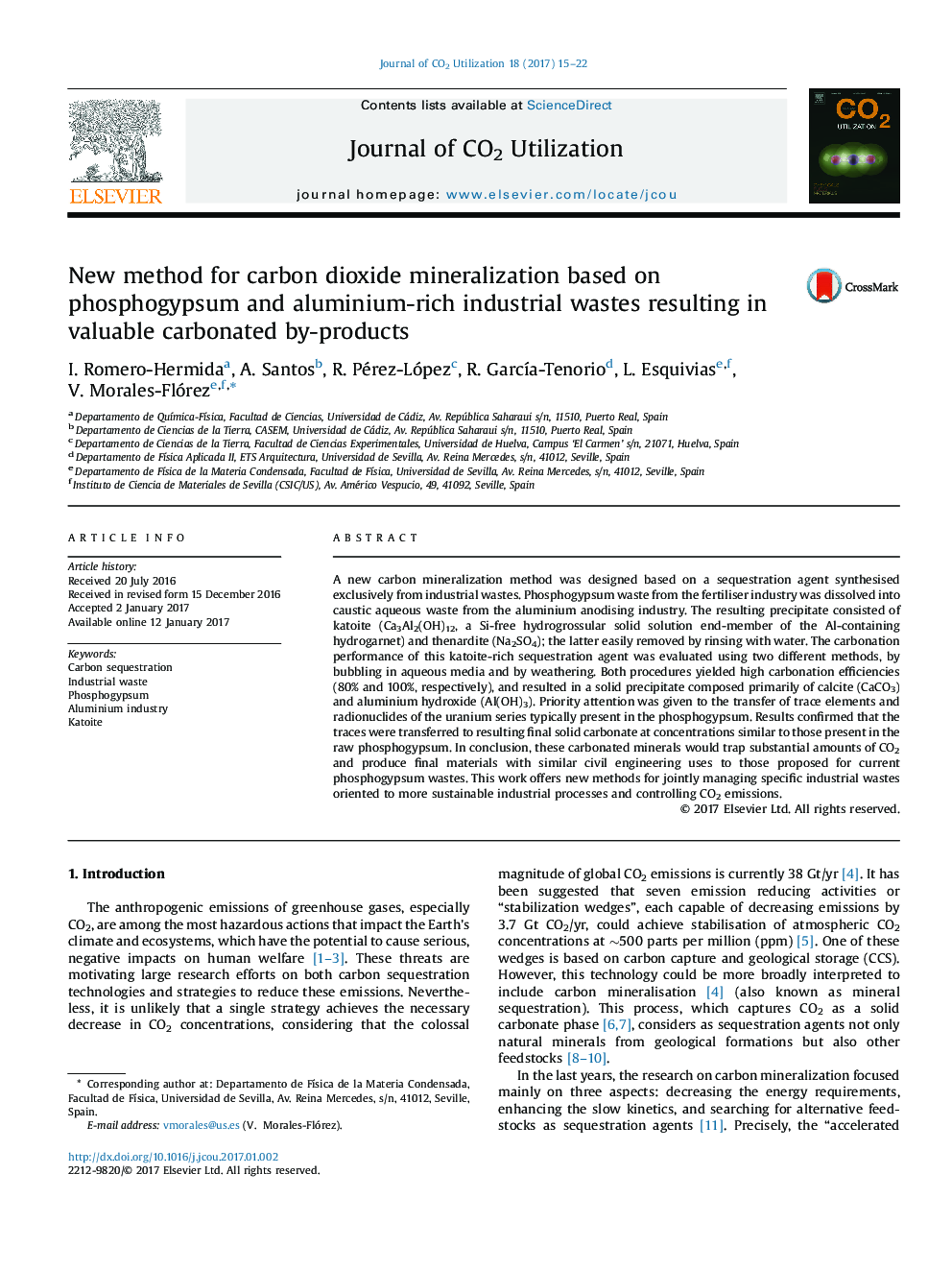| کد مقاله | کد نشریه | سال انتشار | مقاله انگلیسی | نسخه تمام متن |
|---|---|---|---|---|
| 6456176 | 1419844 | 2017 | 8 صفحه PDF | دانلود رایگان |
- Katoite (Ca3Al2(OH)12) was obtained from phosphogypsum and aluminium-rich wastes.
- Micrometric synthetic katoite was confirmed as an efficient carbon sequestration agent.
- Carbonation of katoite resulted in CO2 sequestration at up to 100% efficiency.
- Hazardous traces were transferred from phosphogypsum to final carbonated solid phases.
A new carbon mineralization method was designed based on a sequestration agent synthesised exclusively from industrial wastes. Phosphogypsum waste from the fertiliser industry was dissolved into caustic aqueous waste from the aluminium anodising industry. The resulting precipitate consisted of katoite (Ca3Al2(OH)12, a Si-free hydrogrossular solid solution end-member of the Al-containing hydrogarnet) and thenardite (Na2SO4); the latter easily removed by rinsing with water. The carbonation performance of this katoite-rich sequestration agent was evaluated using two different methods, by bubbling in aqueous media and by weathering. Both procedures yielded high carbonation efficiencies (80% and 100%, respectively), and resulted in a solid precipitate composed primarily of calcite (CaCO3) and aluminium hydroxide (Al(OH)3). Priority attention was given to the transfer of trace elements and radionuclides of the uranium series typically present in the phosphogypsum. Results confirmed that the traces were transferred to resulting final solid carbonate at concentrations similar to those present in the raw phosphogypsum. In conclusion, these carbonated minerals would trap substantial amounts of CO2 and produce final materials with similar civil engineering uses to those proposed for current phosphogypsum wastes. This work offers new methods for jointly managing specific industrial wastes oriented to more sustainable industrial processes and controlling CO2 emissions.
131
Journal: Journal of CO2 Utilization - Volume 18, March 2017, Pages 15-22
